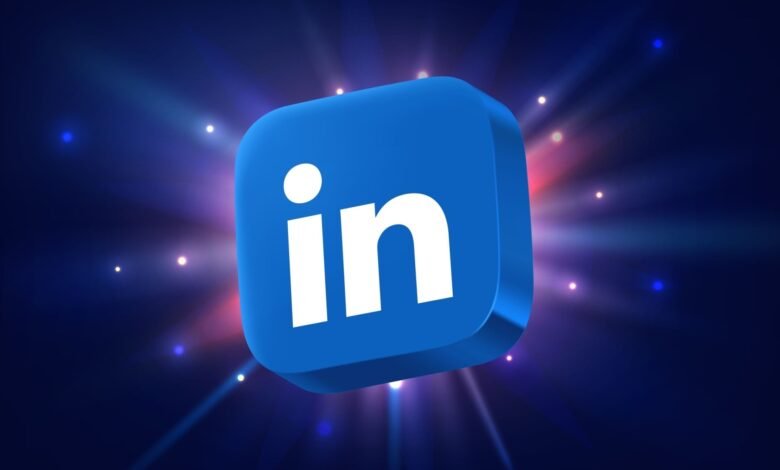Master LinkedIn Retargeting to Engage Prospects at Every Stage

▼ Summary
– LinkedIn Ads’ retargeting feature is powerful but often overlooked, offering creative options to move prospects through the sales funnel.
– At the top of the funnel, retargeting builds awareness and trust by targeting users who engaged with videos, posts, events, or educational content.
– In the middle of the funnel, retargeting focuses on credibility and consideration using case studies and testimonials for users who visited product pages or interacted with documents.
– At the bottom of the funnel, retargeting targets high-intent users with direct calls to action and success stories to encourage conversions from those visiting pricing or demo pages.
– Post-funnel retargeting re-engages old leads or quiet prospects by highlighting new features or content to re-establish interest and credibility.
Many B2B marketers recognize LinkedIn Ads for their excellent prospecting potential, yet the platform’s retargeting capabilities frequently go underutilized. Beyond simply targeting website visitors, LinkedIn provides a range of creative retargeting methods to keep prospects advancing through the sales funnel. This guide outlines how to structure retargeting efforts at each stage and what types of content to offer your audiences along the way.
At the top of the funnel, the focus is on building awareness and trust. Even prospects who have only lightly interacted with your brand need consistent reinforcement and education before progressing further. For this stage, consider using video view retargeting, targeting users who watched at least half of a brand or thought leadership video. You can also retarget individuals who engaged with your company page by liking, commenting, or sharing posts, as well as those who registered for a LinkedIn event, regardless of attendance. Another effective approach is targeting visitors who consumed educational content such as blog articles, ungated resources, or industry insights pages. Predictive audiences, which function similarly to lookalike audiences, allow you to upload contact lists, company lists, or use criteria like existing retargeting lists or lead gen form submissions. Campaigns at this stage should utilize carousel or static ads to highlight your brand’s perspective, share industry statistics, and promote thought leadership content. The primary goal is not immediate conversion but building visibility and trust over an extended period, typically 90 days or more, which is especially valuable for warming up leads in longer B2B sales cycles.
Moving into the middle of the funnel, retargeting begins to directly support pipeline development. Prospects here have shown deeper interest and are actively evaluating how your solution meets their needs. Effective retargeting audiences at this stage include visitors to product, feature, or pricing pages; users who opened but did not submit a lead gen form; individuals who downloaded or viewed documents like whitepapers, case studies, or checklists within LinkedIn; and attendees of webinars or virtual events. You can also upload CRM lists of marketing-qualified leads who are in the pipeline but haven’t fully engaged. A lookback window of 30 to 60 days works well for this segment. Campaigns should emphasize case studies, testimonials, explainer videos, and ROI calculators. The objective is to build credibility, address potential objections, and give prospects the confidence to move toward scheduling a demo.
At the bottom of the funnel, retargeting targets high-intent behaviors to capture prospects who are close to making a purchase decision. These users may be comparing solutions or simply need a final nudge to keep your brand top of mind as sales teams work on closing the deal. Audiences for this stage include visitors to pricing or demo pages, lead gen form submitters who haven’t yet become customers (excluding those marked as “closed won”), stalled sales-qualified leads or open opportunities from your CRM, and repeated website visits from the same company. Campaigns should share specific customer success stories backed by data and results, use direct calls-to-action such as “get started” rather than “book a demo,” and address any remaining objections by reinforcing your product’s value. Since this audience segment is typically smaller, rotate your ad creative frequently to prevent ad fatigue.
For post-funnel re-engagement, retargeting helps revive old leads or prospects who have gone quiet by reminding them of your value in new ways. Target audiences can include closed-lost opportunities from your CRM, past event attendees who didn’t progress further, website visitors from 90 or more days ago who haven’t returned, and individuals who engaged with earlier content such as videos or document downloads. Campaigns at this stage should highlight what’s new, such as updated features, recent case studies, or timely thought leadership, and focus less on hard CTAs and more on re-establishing credibility and interest through fresh, useful content.
Mapping your retargeting strategy to the buyer journey ensures that tactics and CTAs align with each stage. For awareness, target video viewers, blog readers, event RSVPs, and predictive audiences with the goal of educating and introducing your brand. During the consideration phase, focus on product page visitors, form openers, and webinar attendees to build credibility and deepen engagement. At the conversion stage, aim to encourage action and close deals by targeting demo or pricing page visitors, SQLs, and stalled opportunities. Finally, use re-engagement campaigns to reconnect and offer fresh value to closed-lost leads, past event attendees, and long-lookback visitors.
While many advertisers concentrate PPC efforts on prospecting, it’s crucial not to overlook those who have already engaged with your brand. Investing time, effort, and ad dollars into guiding these prospects through the funnel can significantly impact results. The key to effective retargeting lies in matching your tactics and CTAs to each stage of the buyer’s journey. When executed thoughtfully, retargeting can become one of the most powerful methods for driving PPC revenue growth.
(Source: Search Engine Land)





